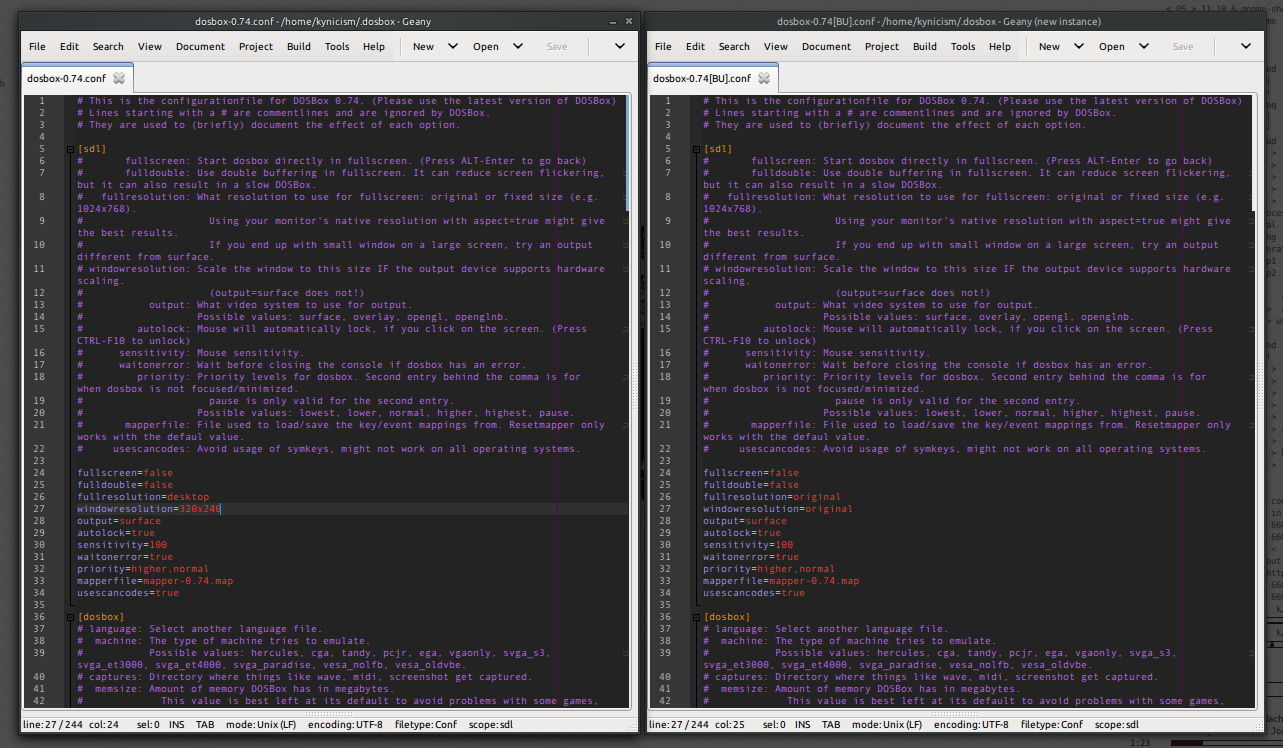

After that you'll have letterboxing.How do I make DOSBox full screen Windows 7? So setting a higher windowresolution for that, only results in bigger text, not more columns and rows. The bigger the Dosbox, the bigger the text, but not more columns and rows. So if the program/game is (natively) say 1280x720 (HD), then your window resolution setting shouldn't be bigger than that (remember, it's fixed not dynamic when you use AxB as windowresolution).Įxample: DOS Lotus 123 will only extend eight columns and 20 rows. The next issue is, what's the resolution of the program itself? It won't go past its own resolution. If you really want fullscreen, then you need to specify the actual resolution of your screen. For you are getting a window, but you sized it short of your screen, hence the two black stripes (letterboxing). So now I wonder if you really want fullscreen, though your question asks about only a window. So you either should change fullresolution to your actual screen resolution, or revert to fullresolution=original default, and only specify the window resolution.

You've essentially told Dosbox that your screen is the same size as your window, but your screen is actually bigger, 1600x900 (or higher) per the Googled specs for that computer. That's why you're getting the letterboxing (black on either side). Looking again at your question, I think I see what's wrong with your conf file.
#MAKE DOSBOX FULL SCREEN HOW TO#
I'm sure there's a way to make a script, but haven't yet learned how to do that. You still have to go through the mount command (i.e., mount c~ c:\123 if that's the location and file you'll execute). Then, type dosbox at the command line or create a Launcher (in KDE, this is a right click on the desktop) with the command dosbox. So after you've made the changes, save the file with the original name of dosbox-0.74.conf. With 'false' left alone, I had a somewhat smaller window (I use widescreen monitors, whether laptop or desktop, maybe that's why). When I did this, the window took up over half of the screen. Search the file for 'aspect', and change the 'false' to 'true' if you want an even bigger window. There's one other setting to test: aspect. Then, search on 'output', and as the instruction in the conf file warns, if and only if you have 'hardware scaling', change the default 'output=surface' to something else he then lists the optional other settings. On my screen, that doubled the window size just as it does with the max Font tab in Windows Properties (for the exe file as you'll see below the = marks, 32-bit Windows doesn't need Dosbox). Be specific, replacing the 'windowresolution=original' with 'windowresolution=900x800' or other dimensions. The best suggestion is to use a bigger-window resolution like 900x800 (which is what I used on a 1366x768 screen), but NOT the actual resolution of your machine (which would make the window fullscreen, and you said you didn't want that). So look for windowresolution, see what the comments in conf file say you can do. Your question was about WINDOW, not full. You want to leave fullresolution alone for now. There are essentially two variables: resolution and output.



 0 kommentar(er)
0 kommentar(er)
